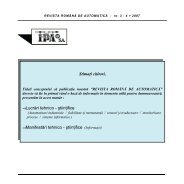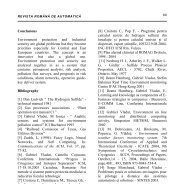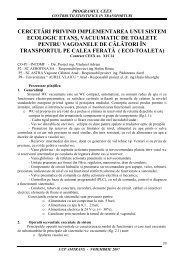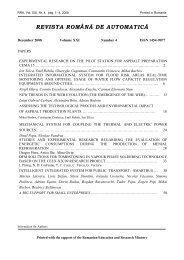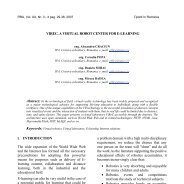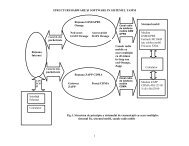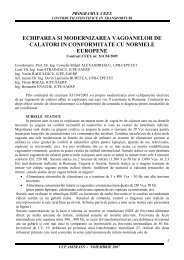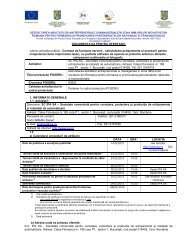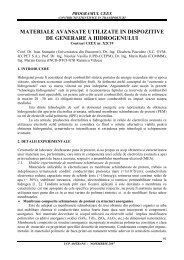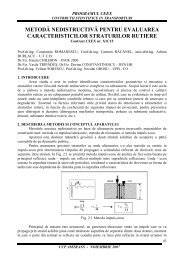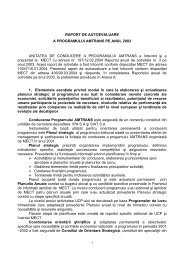0_ CUPRINS - IPA SA
0_ CUPRINS - IPA SA
0_ CUPRINS - IPA SA
You also want an ePaper? Increase the reach of your titles
YUMPU automatically turns print PDFs into web optimized ePapers that Google loves.
Fig. 1 identification of natural flood risk areas<br />
Activities to be undertaken after the flood phenomenon:<br />
• helping to meet the immediate needs of people affected by disaster and the return to<br />
normal life;<br />
• reconstruction of damaged buildings, of infrastructure and of those of the flood<br />
protection system;<br />
• review of flood management activities in order improve the planning of intervention<br />
that will deal with future events in the affected area and in other areas .<br />
Assessing the vulnerability of exposed elements, material damage and human losses<br />
Vulnerability refers to the ability of an item exposed during the impact of natural<br />
hazards. Definition of vulnerability of a natural hazard generally refers to the characteristics<br />
of an element exposed to the hazard – road, building, person, economic and social objective -<br />
that contributes to the ability of this element to resist and to recover following the impact of<br />
natural hazards.<br />
Through GD 447/2003 vulnerability is defined as the degree of impairment of an item<br />
or group of items in an area exposed to landslides. Is expressed in a scale from 0 (no loss) to 1<br />
(total destruction). For loss of human lives, vulnerability is the probability that a life located<br />
in the area is affected by the landslide activity, and to be lost if the landslide occurs.<br />
Vulnerability of people is a matter difficult to assess, making it normally the subject of<br />
socio-economic and administrative investigations that are very extremely detailed, and which<br />
unfortunately were not provided by Romanian law and were not done in Romania (until now).<br />
Social vulnerability, which assesses the individual's ability to recover from<br />
involvement in natural hazards can be analyzed on four following different levels:<br />
• Individual in domestic environment (refers to the attributes / personal potencies of<br />
response);<br />
• Community (refers on the response of the individual with the social environment in<br />
which it develops);<br />
• Regional / geographic (distance to the work of the employee);<br />
• Administrative / institutional (the funds allocated to disaster and to prevention<br />
studies).<br />
This simplification aims to illustrate that there are various factors that contribute to<br />
social risk, due to natural hazards, including those that are relating to the administration of<br />
regional environmental hazards in the region or at home, going up to individual attributes.<br />
56



